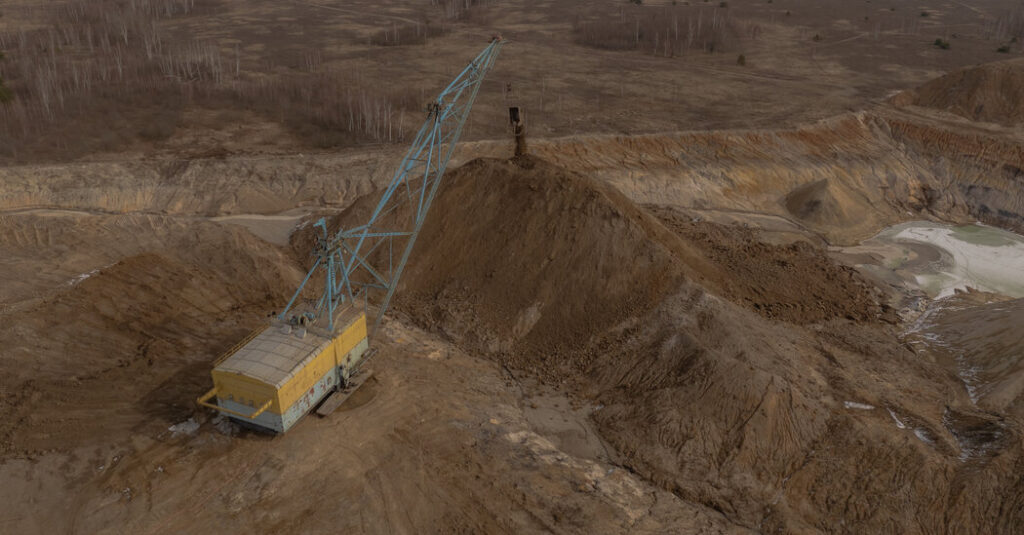Ukraine signed a deal giving the United States control over a share of its future revenue from natural resources, a long-awaited agreement that Kyiv hopes will clear the way for continued U.S. support.
The announcement late on Wednesday that the deal had been signed came after months of fraught negotiations — including an explosive Oval Office confrontation — as the Trump administration tries to broker an end to Ukraine’s three-year war with Russia.
The agreement, which involves creating a joint investment fund between the countries, is intended to give President Trump a personal stake in the country’s fate while addressing his concerns that the United States has provided Kyiv with a blank check to try to withstand Russia’s invasion. It could also clear the way for more consequential talks on U.S. military backing for Ukraine and on the terms of a possible truce with Russia.
What’s in the deal?
The mineral deal will create a U.S.-controlled investment fund that would receive revenue from Ukraine’s natural resources, according to a copy of the agreement made public on Thursday.
It appears that Ukraine managed to get some of what it wanted, but not everything.
The Trump administration had said in March that it wanted Ukraine to repay assistance given during the war with its mineral wealth — which would have financially hurt Ukraine for generations. The idea of treating that aid as debt was removed in the final deal. And the deal appears to specifically keep the door open for Ukraine to eventually join the European Union.
There was no mention of a U.S. security guarantee in the text of the nine-page deal that Ukraine’s government published on Thursday.
Kyiv and Washington will jointly manage the fund, which will be financed with revenues from new projects in critical minerals, oil and gas — not from projects that are already operating.
Although the agreement does not treat past aid to Ukraine as debt that the country needs to repay, it does say that future military aid, including weapons and training, will be treated as a U.S. contribution to the fund — meaning that Ukraine will need to match future aid with resource wealth.
The agreement does not change the management of Ukraine’s state-owned energy companies. All natural resources will still be considered Ukraine’s property.
In addition, the agreement says that the United States and Ukraine want to ensure that countries “that have acted adversely to Ukraine in the conflict do not benefit from the reconstruction of Ukraine” once peace is reached — in other words, Russia.
Ukraine’s parliament still has to ratify the agreement, which will probably happen in the next two weeks, lawmakers said on Thursday.
Sticking points along the way
Early drafts of the deal had swiveled between what critics called a brazen extortion of Ukraine by the Trump administration and versions that included points sought by Ukraine, such as references to U.S. support for postwar security guarantees.
Without those guarantees, Ukraine said, Russia could quickly violate any cease-fire or restart the war after regrouping and rearming. Mr. Trump has said that Ukraine should look to Europe, not the United States, for such security guarantees.
What happened in the Oval Office
The deal was initially meant to be signed when President Volodymyr Zelensky of Ukraine visited Washington in February. But a signing ceremony was abruptly canceled after Mr. Trump and Mr. Vance castigated the Ukrainian president in the Oval Office for what they said was not being grateful enough for U.S. support and sought to press him into making a peace deal. Mr. Zelensky was abruptly asked to leave the White House, and the United States temporarily froze all military assistance and intelligence sharing with Ukraine.
Since then, Mr. Zelensky worked to smooth relations. And both he and Mr. Trump signaled that a deal could still be reached.
Ukraine’s mineral resources
Ukraine controls more than 100 major deposits of critical minerals, according to a study by the Kyiv School of Economics, along with modest oil and natural gas reserves.
-
Titanium, used in construction, airplanes, orthopedic implants and as an additive in paint and cosmetics, including sunscreen, among many other things. Titanium mines in central Ukraine account for about 6 percent of global production, according to Ukrainian media.
-
Uranium is used in nuclear power plants and nuclear weapons. Ukraine has Europe’s largest reserves.
-
Oil and natural gas fields dot several regions of Ukraine, and surveys conducted before the war found offshore natural gas reserves.
-
Lithium, a crucial element in batteries, including those in electric vehicles and in other industrial products, including some medications. Ukraine has a third of Europe’s total reserves, although some sites are in war-contested areas. Before the war with Russia, Ukrainian officials suggested to Elon Musk that he invest in Ukrainian lithium mines.
-
Rare earths, a group of more than a dozen metals, much less abundant than titanium or lithium, that are used in many high-tech sectors, including green energy, electronics and aerospace. Ukraine has substantial reserves that are mostly untapped, and it is unclear how expensive they would be to extract.
-
Manganese, used for steel smelting.
-
Zirconium, used in the ceramics industry, nuclear fuel rods and artificial diamonds.
-
Graphite, used in steel manufacturing and electric motors. Ukraine is one of the world’s leading producers.
What happens next?
All along, Ukraine has been intent on getting a seat at the negotiating table with Moscow and assuring safeguards against future Russian aggression.
Mr. Zelensky has long made clear that the agreement on natural resources is not an end in itself. He is seeking continued American support.
Alan Rappeport and Peter Baker contributed reporting.


